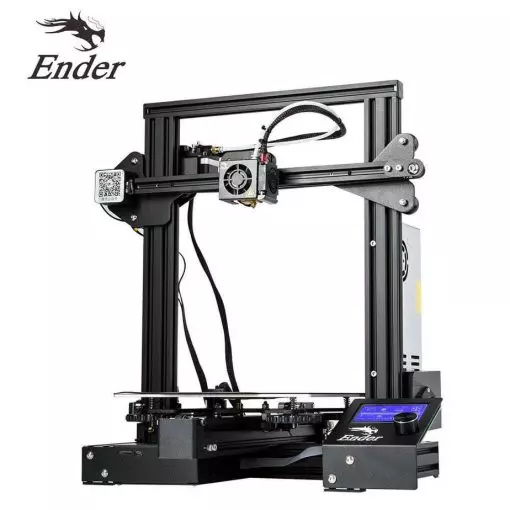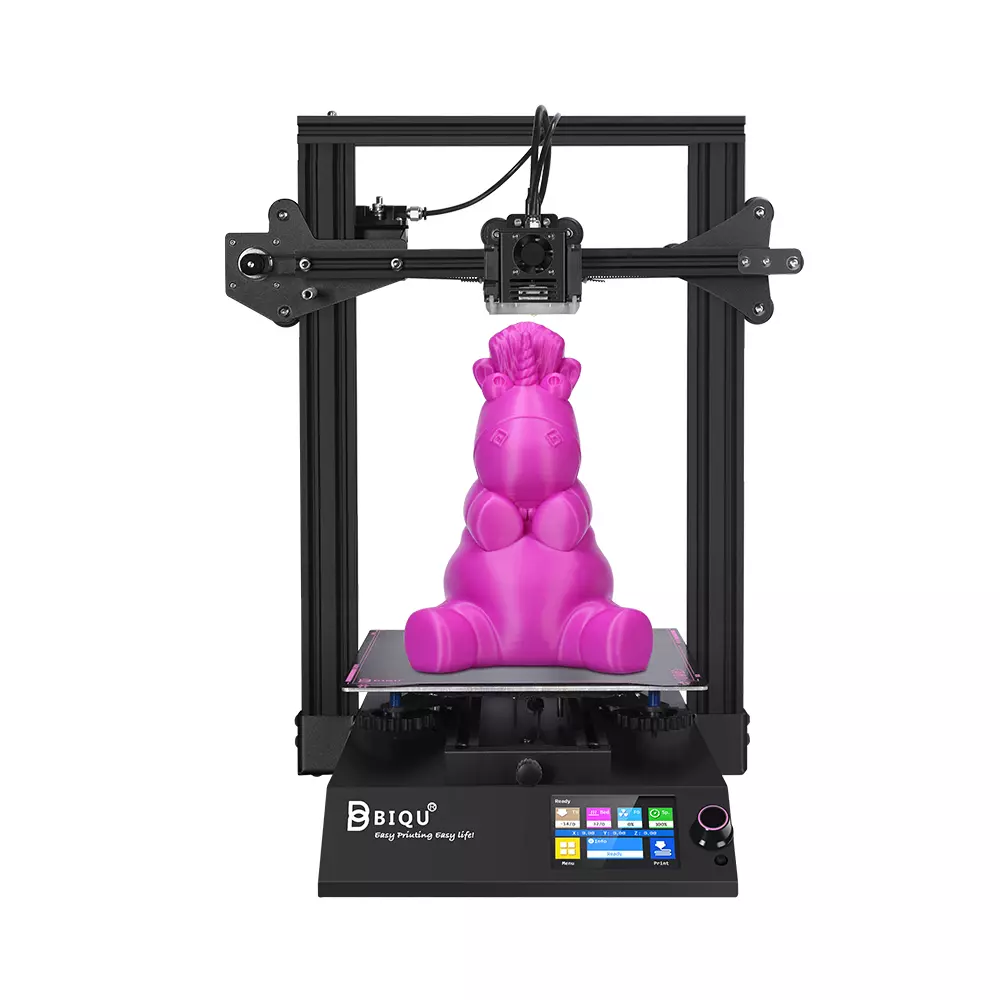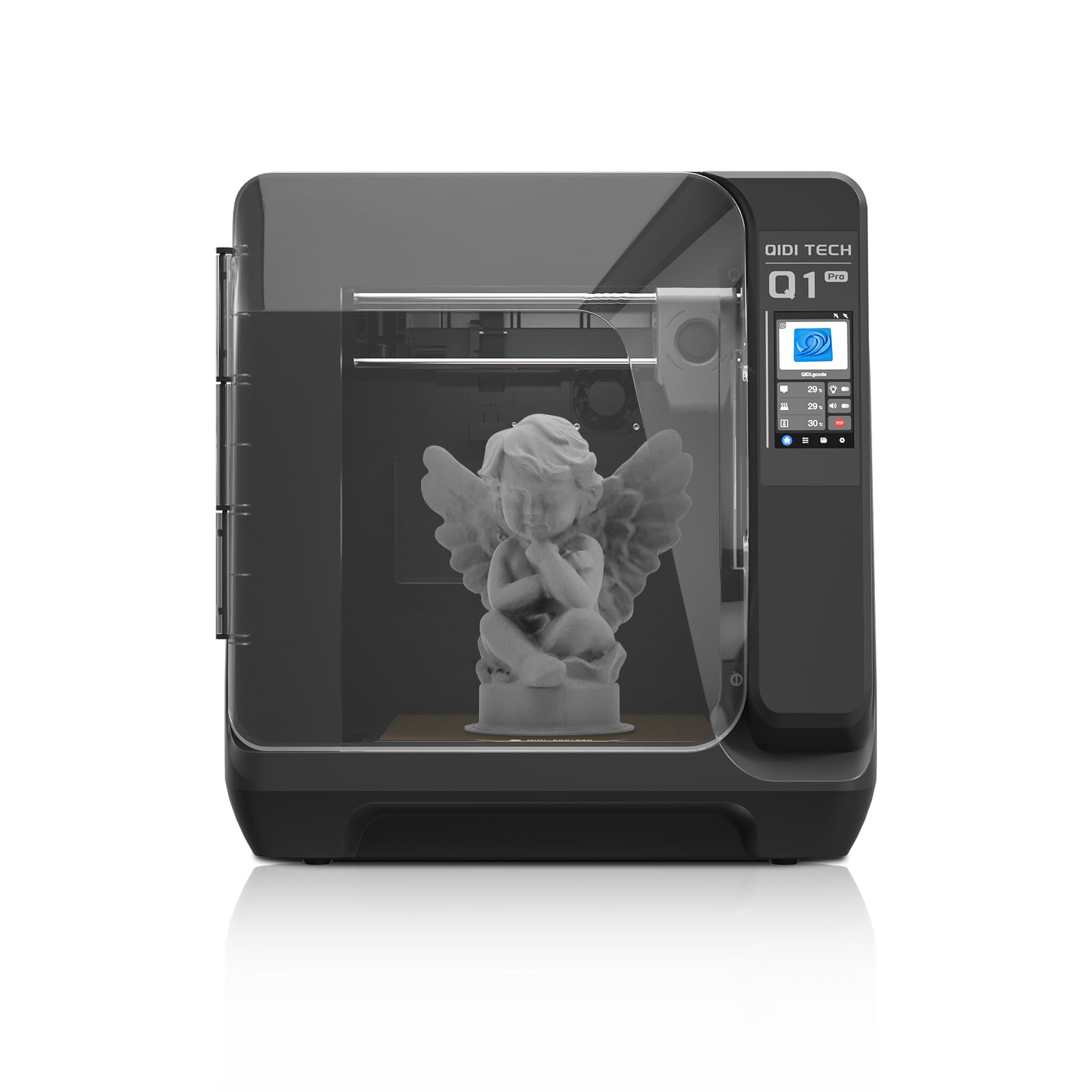Compare Ender 3 vs BIQU B1 vs Q1 PRO
Comparison between the best 3D printers
Choose the best 3D printer at the best price. The cheapest 3D printers are here.
Buy a 3D printer here with 3D Fila.
 |
 |
 |
|
| Model | Ender 3[BUY Ender 3] |
BIQU B1 |
Q1 PRO[BUY Q1 PRO] |
| Printing Material | Filament | Filament | Filament |
| Estimated price | $210,00 | $269,00 | $449,00 |
| Fabricante | Creality 3D | BigTreeTech | QIDI |
| Release Year | 2018 | 2020 | 2024 |
| Print Volume [mm] | 220x220x250 | 235x235x270 | 245x245x245 |
| Printer Size [mm] | 440x440x465 | 412x402x492 | 467x477x489 |
| Weight [kg] | 6,62 | 8,00 | 20 |
| Power Loss Recovery | NO | YES | YES |
| Enclosed printer | NO | NO | NO |
| Bed Leveling | Manual | Manual | Automatic |
| Filament End Sensor | NO | YES | YES |
| Bed type | Heated | Heated | Heated |
| Power supply system | Bowden | Bowden | Direct Drive |
| Standard nozzle | 0,4 | 0,4 | 0,4 |
| Maximum Nozzle Temperature [°C] | 255 | 250 | 350 |
| Maximum Bed Temperature [°C] | 110 | 100 | 120 |
| Maximum printing speed [mm/s] | 180 | 100 | 600 |
| Filament holder | YES | YES | YES |
| Camera for supervision | NO | NO | YES |
| Recommended filaments | PLA, TPU, ABS, PETG | PLA, TPU, ABS, PETG | PLA、ABS、ASA、PETG、TPU、PC、PA、PA-CF、PET-CF、PAHT-CF etc. |
| Recommended slicers | Cura, Simplify, Slic3r | Cura, Simplify, Slic3r | QIDI Slicer/Cura/Simplify 3D/ORCA/PRUSA Slicer |
| Maximum Resolution [mm] | 0,1 | 0,1 | 0,1 |
| Processor | 8 bits | 32 Bits BTT SKR V 1.4 | Cortex-A53,64-bit Processor |
| Display | Mono | Touchscreen TFT 3,5'' | Touchscreen 4,3'' |
| Power Supply | 24V / 270W | 24V / 360W | 350 W |
| Connectivity | SD / USB | SD / USB | WiFi/USB Flash Drive/Ethernet Cable |
| Operating systems | Windows, Mac, Linux | Windows, Mac, Linux | Windows, Linux, Macbook |
| Date of registration in the system | 2021-04-13 | 2021-04-14 | 2024-07-09 |
| Release date | 2018 | 2020 | 2024 |
| Extra features | The Ender 3 V1 is a DIY assembly 3D printer, a sales leader since 2017, standing out for its cost-benefit. With a wide printing capacity, it has a CNC machined structure for precision and stability. It offers high-precision prints with low noise, thanks to its innovative V-profile and pulleys. It has a self-adhesive magnetic platform for easy removal of models and excellent adhesion. The Ender 3 heats up quickly, reaching 100°C in 5 minutes, ideal for agile prints. It includes protection against power failures, allowing you to resume printing after interruptions, saving time and material. | The BIQU B1 is an advanced 3D printer with a silent 32-bit BTT SKR V1.4 motherboard and ARM Cortex-M3 CPU, offering DIY interfaces (I2C, SPI, WiFi) and dual Z-axis. Its dual BTT B1 TFT35 V3.0 operating system allows real-time monitoring and multiple printing modes, including G-code visualization effects. It stands out for its BIQU SSS (Super Spring Steel), ensuring easy model adhesion and simplified removal, with the possibility of using it on both sides. It includes a filament sensor, automatically pausing printing in case of filament breakage. The multicolored RGB lights integrated into the hotend allow you to view the printing status even at night. Additional notes include the need for a BIQU-specific Type-C cable and extra interfaces for smart filament sensor and BL Touch. | The QIDI Q1 Pro 3D printer stands out for its Core XY structure and heating chambers that reach up to 60ºC, ideal for advanced materials such as ABS and Nylon. It features Klipper firmware, an automatic leveling system, a high-flow extruder with a double metal nozzle and a hotend that reaches 350ºC. It offers connectivity via Wi-Fi, USB and Ethernet, as well as a 1080p camera for remote monitoring and an intuitive touchscreen for easy operation. |
| Support for multiple colors and materials (AMS and CFS) | NO | NO | NO |
Notes * |
|||
| Cost-benefit | 6 / 10 | 7 / 10 | 8 / 10 |
| Hardware | 0.5 / 10 | 2 / 10 | 5.4 / 10 |
| Screen | . | . | . |
| Print volume | 3 / 10 | 3 / 10 | 3 / 10 |
| Performance | 1 / 10 | 1 / 10 | 5 / 10 |
| [BUY Ender 3] | [BUY Q1 PRO] |
Conclusion |
| In conclusion, the comparison of the Ender 3, BIQU B1, and QIDI Q1 Pro reveals distinct advantages and disadvantages for each model, catering to different user needs and budgets. The **Ender 3** stands out for its cost-effectiveness, making it an excellent choice for hobbyists and beginners seeking a reliable entry-level printer. With its spacious print volume and robust design, it offers a great balance of features for its price. However, it lacks advanced automation features like power loss recovery and sensor systems, which may limit its convenience for more demanding users. On the other hand, the **BIQU B1** offers a slightly higher tier of performance with enhancements such as a more advanced motherboard and added features like a filament sensor. While it carries a higher price tag than the Ender 3, it provides greater functionality, making it suitable for users looking for more flexibility and control in their printing process. However, it still falls short in terms of print speed and overall advanced capabilities compared to the QIDI Q1 Pro. The **QIDI Q1 Pro**, being the most expensive option, provides the best features for serious enthusiasts and professionals. With its automatic bed leveling, high-temperature capabilities, and efficient design, it excels in performance and versatility, especially for advanced materials. The inclusion of features such as Wi-Fi connectivity and a built-in camera for remote monitoring enhances its usability significantly. While the investment is greater, the performance and features available justify the cost for those who need superior capabilities for more complex projects. In summary, for budget-conscious and novice users, the Ender 3 is a great entry point. The BIQU B1 provides added sophistication without a significant price jump, and the QIDI Q1 Pro is ideal for advanced users requiring high performance and versatility. Ultimately, the choice between these models should align with the user’s specific needs, budget, and printing ambitions. |

